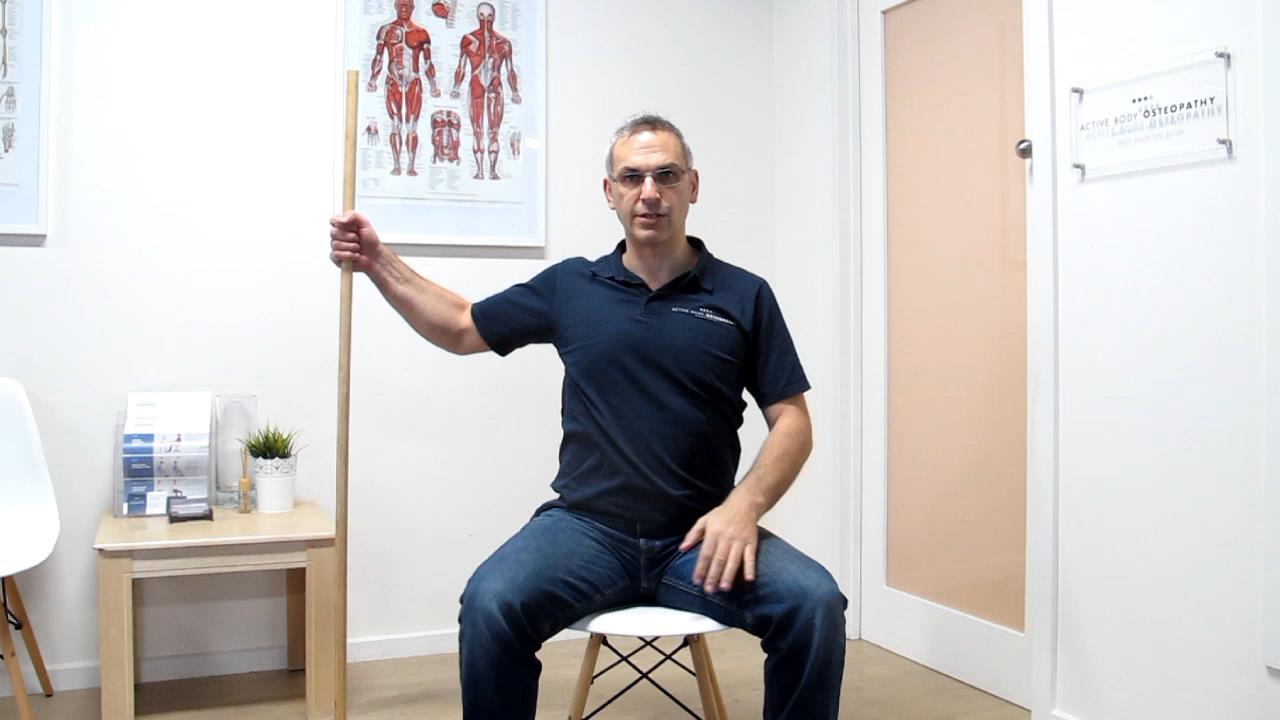Fix Your Shoulder Pain With This Simple Exercise
Between working as and osteopath and teaching martial arts my body can at times take a bit of a beating. Because of that I had some niggling shoulder pain that I couldn’t get rid of. In my research I discovered the benefits of dead hangs and thought I would pass that on to you.
I came across a book called Shoulder Pain? The Solution & Prevention by Dr. John M. Kirsch, an orthopaedic surgeon with more than 30 years in practice. In his book he advocates dead hanging as a highly effective exercise for shoulder pain and that doing it regularly could eliminate shoulder pain entirely, whether it’s because of an injury or poor posture.
Big claims I know. So how does it work?
Benefits of the dead hang
According to Dr. Kirsch, the hang is good for people with shoulder impingement and even rotator cuff injuries. Here’s why:
Apart from stretching the brachial arteries, the hang also stretches and strengthens the supraspinatus tendon. This is the tendon that’s mainly responsible for shoulder strength, mobility, and endurance.
When you raise your arms forward, the supraspinatus tendon gets pinched between your shoulder bones. That’s where the pinching sensation comes from when you try to raise an injured or compromised shoulder.
But when the arms are raised straight up as in the dead hang, this gives the tendon room to move and stretch without getting pinched. This allows you to exercise, stretch, and reshape this tendon and the surrounding muscles and bones.
The more you do the dead hang, the better and stronger your shoulders will be.
Spinal decompression and improved posture
Besides stretching your shoulders, hanging from a bar also decompresses and stretches the spine.
Most of the activities and movements involved in our modern-day lifestyles compress our spine. This includes extended periods of sitting, carrying heavy objects, squatting, and even sleeping can compress the spine.
Hanging in the dead hang position for even a few seconds at a time is effective in decompressing the spine by opening up the space that has been lost between your bones, joints, and discs in your back.
Dead hangs are awesome for correcting your posture. Dead hangs can strengthen, decompress, loosen, and mobilize your upper body. All four of these factors are major contributors to better posture.
Who should dead hang?
The dead hand is perfect for those who want to maintain healthy shoulders, or for those who already have shoulder pain and who have been given a diagnosis of subacromial impingement syndrome (SIS), rotator cuff injury or frozen shoulder
How to perform a dead hang
To perform a dead hang, follow these steps:
- Use a secure overhead bar. Use a step or bench so you can easily reach the bar with your arms. You don’t want to jump straight into a dead hang.
- Grip the bar with an overhand grip (palms facing away from you). Aim to keep your arms shoulder-width apart.
- Move your feet off the step or bench so you’re hanging on to the bar.
- Keep your arms straight. Don’t bend your arms and stay relaxed.
- Don’t hold your breath. As with any exercise, breathing assists and compliments the movement. Apart from aiding blood flow, concentrated breathing will allow your body to fully relax into the hang.
- Hang for 10-20 seconds if you’re new to the exercise. Work your way up to 45 seconds to 1 minute at a time.
- Slowly step back onto the step or bench before releasing your arms. Repeat up to 3 times, if you wish.
Modified dead hang for beginners
If your current physical condition doesn’t allow you to hang from a bar with your feet off the ground, start with partial or reduced weight hangs. Put your feet on the ground or on a box (if you can’t reach the bar without your feet leaving the ground) and then bend your knees to lower yourself while still standing on your feet. As your strength improves, bend your knees more and allow more of your body weight to be supported by your arms, until you can hang with your feet off the ground.
As with any exercise, you might feel some pain while doing the hang. The important part is that the pain should be tolerable and not the kind that signals tearing or damage. Also, the pain should go away once you stop doing the exercise. And if not, you might need to have your shoulders examined by a qualified health care practitioner.
Here’s a short video tutorial on the dead hang in case you missed anything:
Here’s another video explaining the benefit of dead shoulder hangs. Got to love that into music too.
So why not give dead hangs a go. Even if you don’t currently have shoulder pain it can be a great way to prevent future injuries, increase flexibility and mobility.





